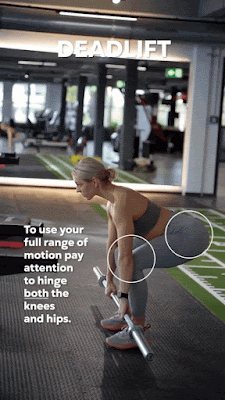Mastering Proper Deadlift Form: A Comprehensive Guide
The deadlift is a compound exercise that targets multiple muscle groups, including the hamstrings, glutes, lower back, and core. It is often referred to as the king of all exercises due to its effectiveness in building strength and muscle mass. However, performing the deadlift with improper form can lead to injury and hinder your progress. In this article, we'll discuss the key components of proper deadlift form to help you perform the exercise safely and effectively.
1. Set Up Properly:
Before lifting the barbell, ensure that it is positioned over the middle of your feet. Stand with your feet hip-width apart and the barbell close to your shins. Your toes should be pointed slightly outward, and your grip should be just outside your knees. Engage your core and maintain a neutral spine throughout the movement.
2. Initiate the Lift:
To initiate the lift, drive through your heels and push your hips back while bending at the knees. Keep your chest up and your back flat as you lower your torso towards the ground. Your arms should remain straight, and the barbell should stay close to your body throughout the movement.
3. Maintain a Neutral Spine:
One of the most important aspects of proper deadlift form is maintaining a neutral spine. Avoid rounding or arching your back during the lift, as this can increase the risk of injury. Instead, focus on keeping your spine in a straight line from your head to your tailbone. Engage your lats by pulling your shoulder blades down and back, which will help stabilize your spine.
4. Engage Your Core:
Bracing your core is essential for stability and power during the deadlift. Take a deep breath and hold it in as you lift the weight off the ground. This will create intra-abdominal pressure and help protect your spine. Keep your core tight throughout the lift, but avoid holding your breath for too long, as this can cause dizziness and fatigue.
5. Drive Through Your Heels:
As you lift the barbell off the ground, focus on driving through your heels and pushing your hips forward. Keep the barbell close to your body and maintain a smooth, controlled movement. Avoid leaning back excessively at the top of the lift, as this can strain your lower back.
6. Lower the Weight with Control:
Once you've reached the top of the lift, reverse the movement by pushing your hips back and lowering the barbell to the ground in a controlled manner. Keep your core engaged and your spine neutral as you lower the weight. Avoid dropping the barbell or letting it bounce off the ground, as this can increase the risk of injury.
Mastering proper deadlift form is essential for maximizing the benefits of the exercise and minimizing the risk of injury. By following these key principles, you can perform deadlifts safely and effectively, leading to gains in strength, muscle mass, and overall performance. Remember to start with light weights and gradually increase the load as you perfect your technique. If you're unsure about your form, consider seeking guidance from a qualified fitness professional.



No comments:
Post a Comment